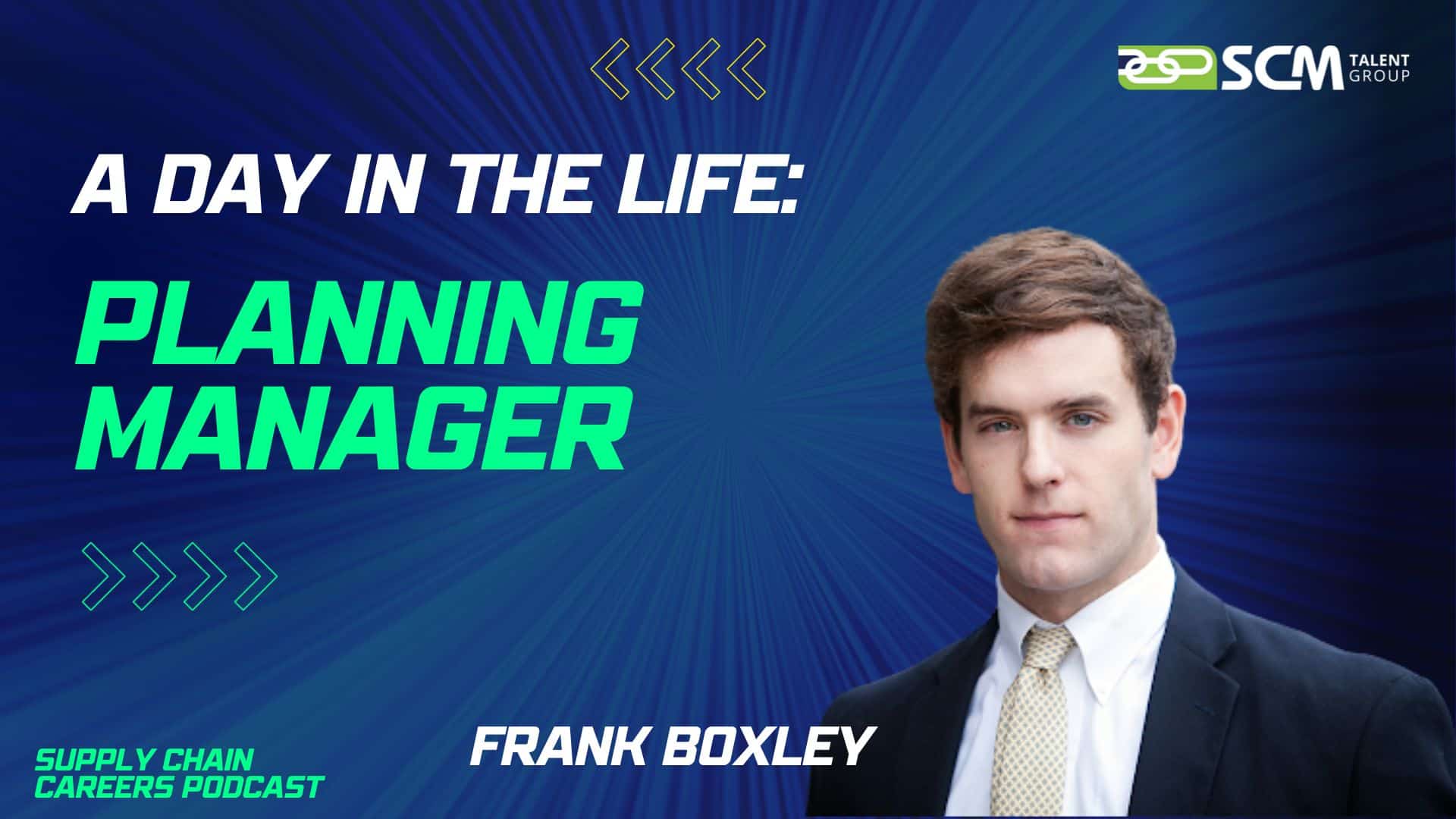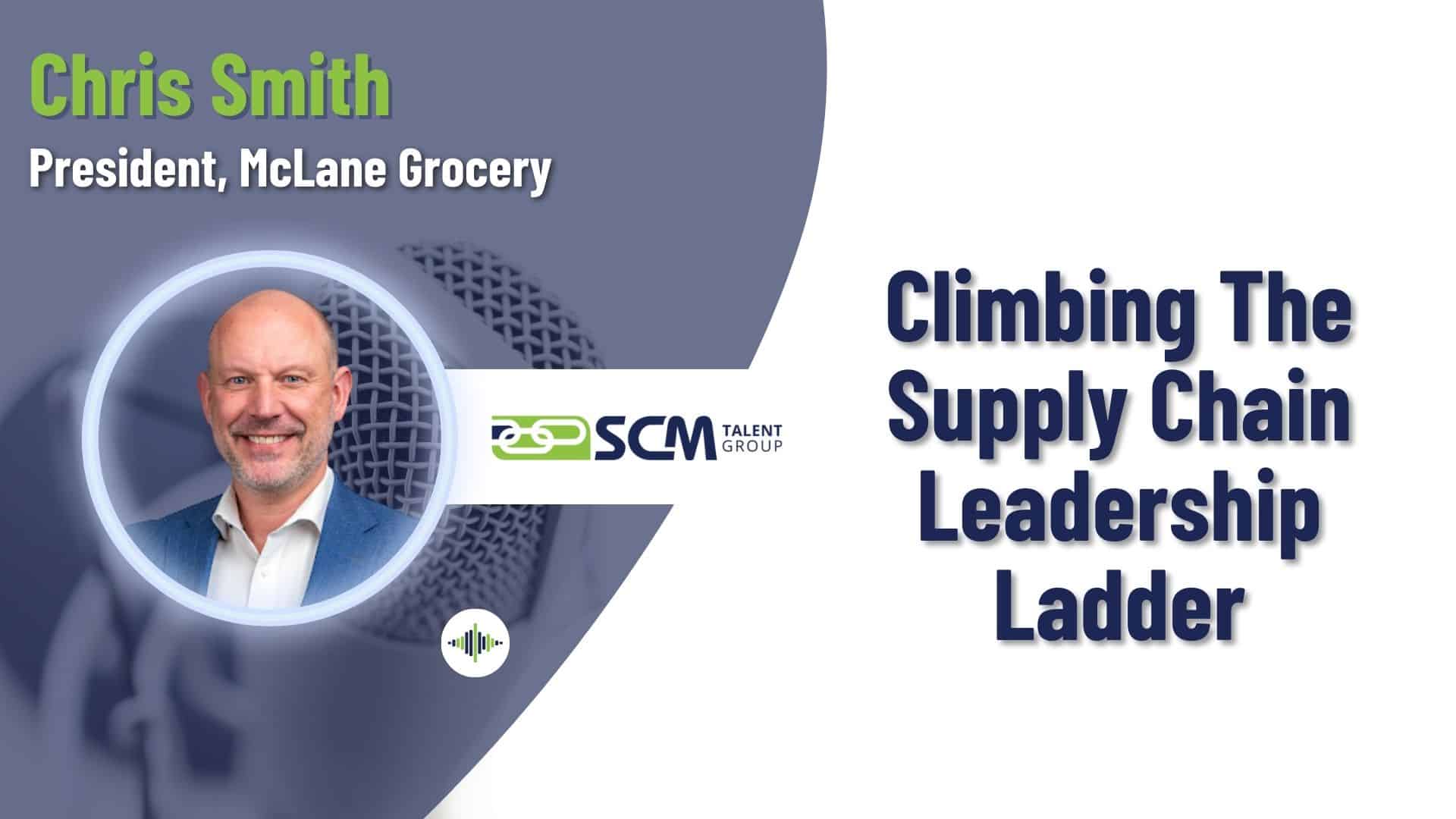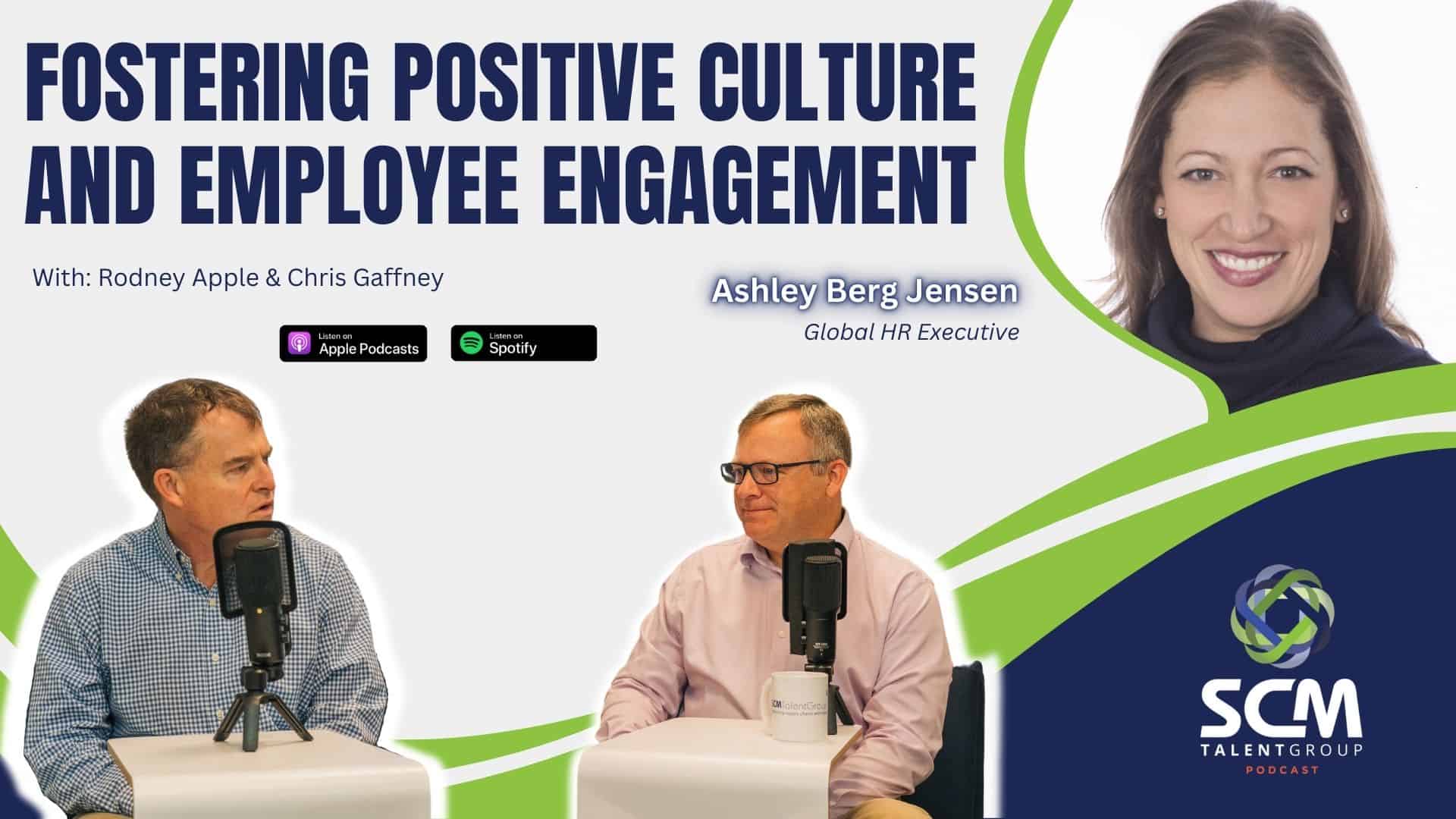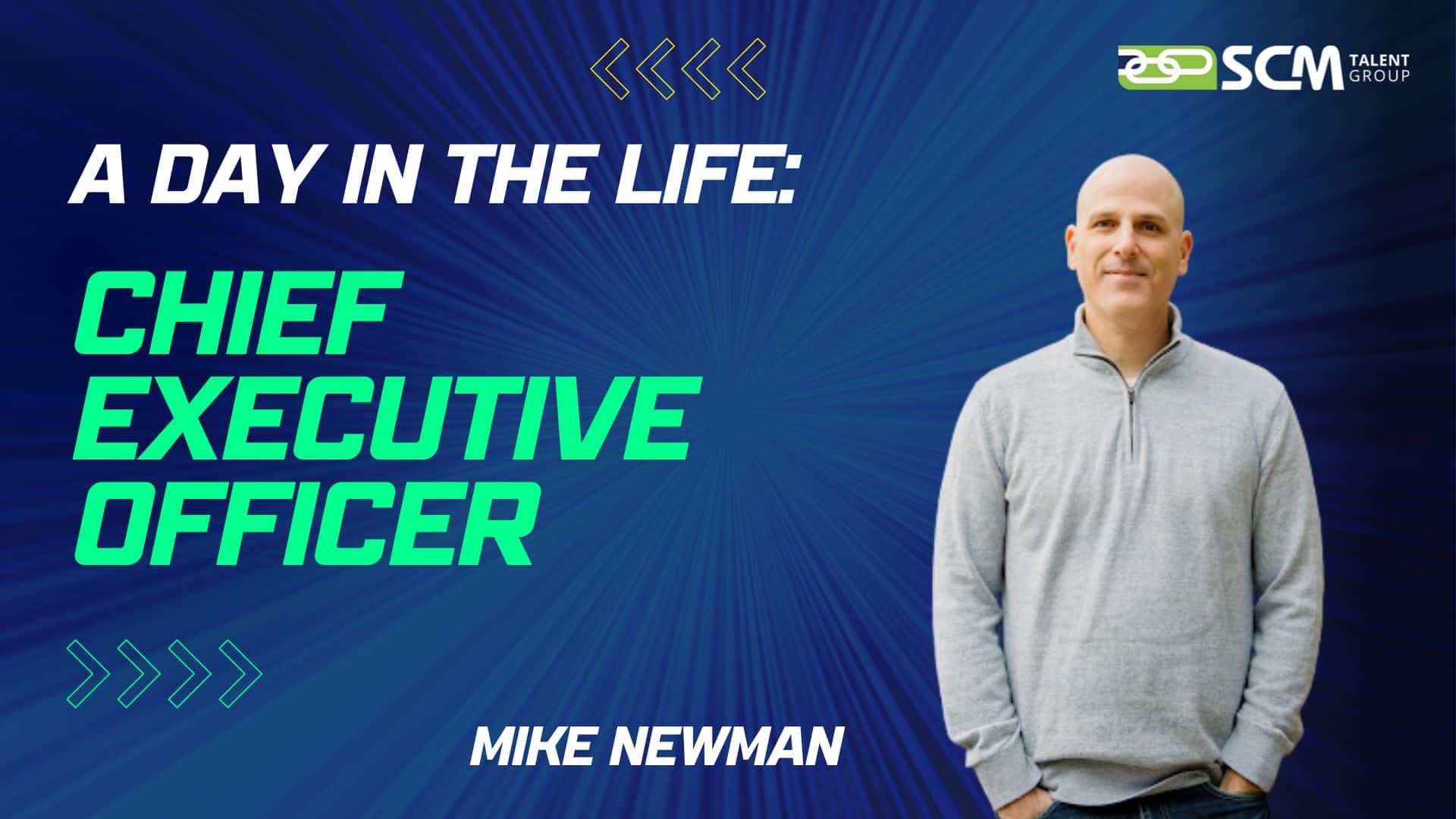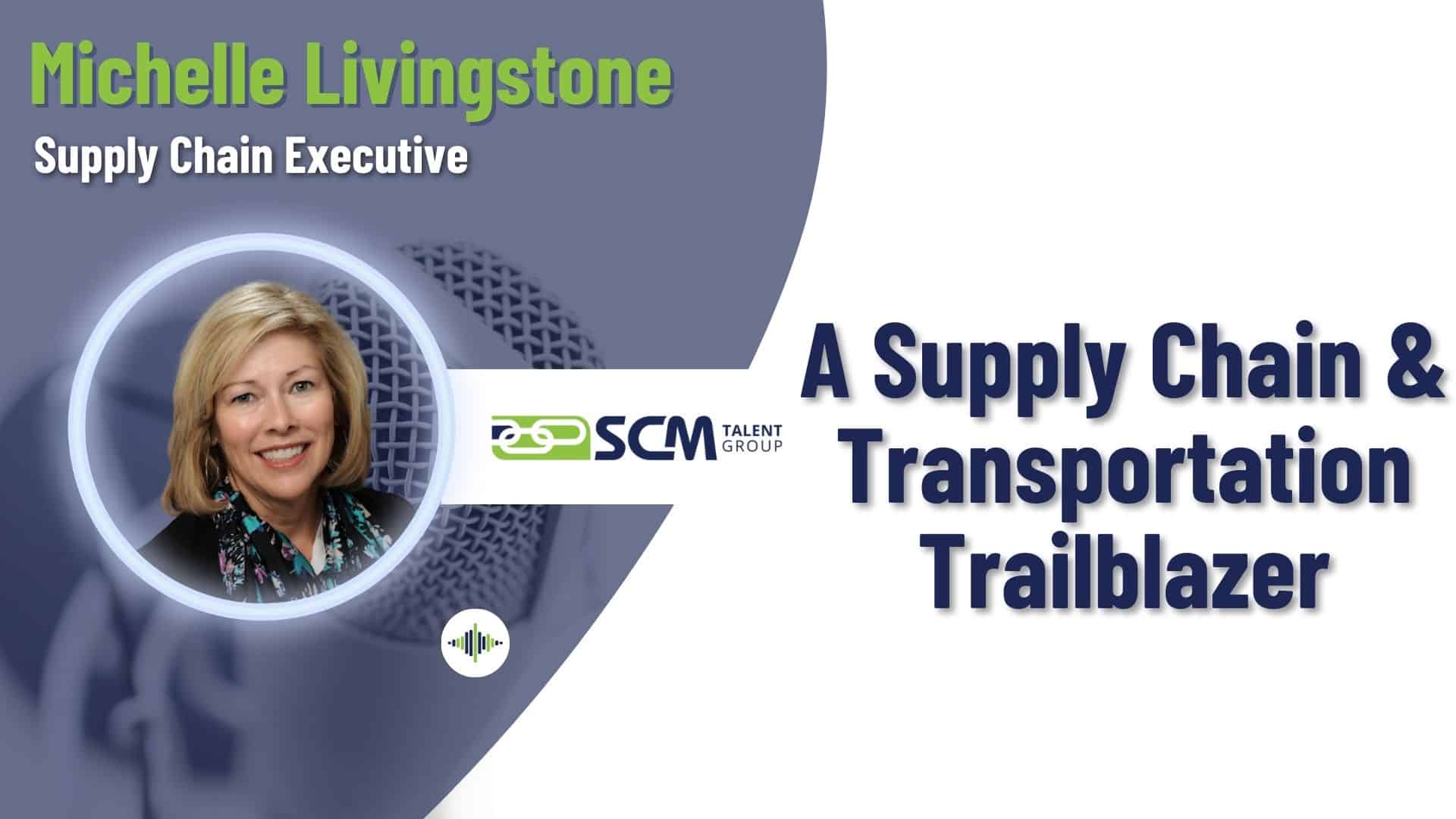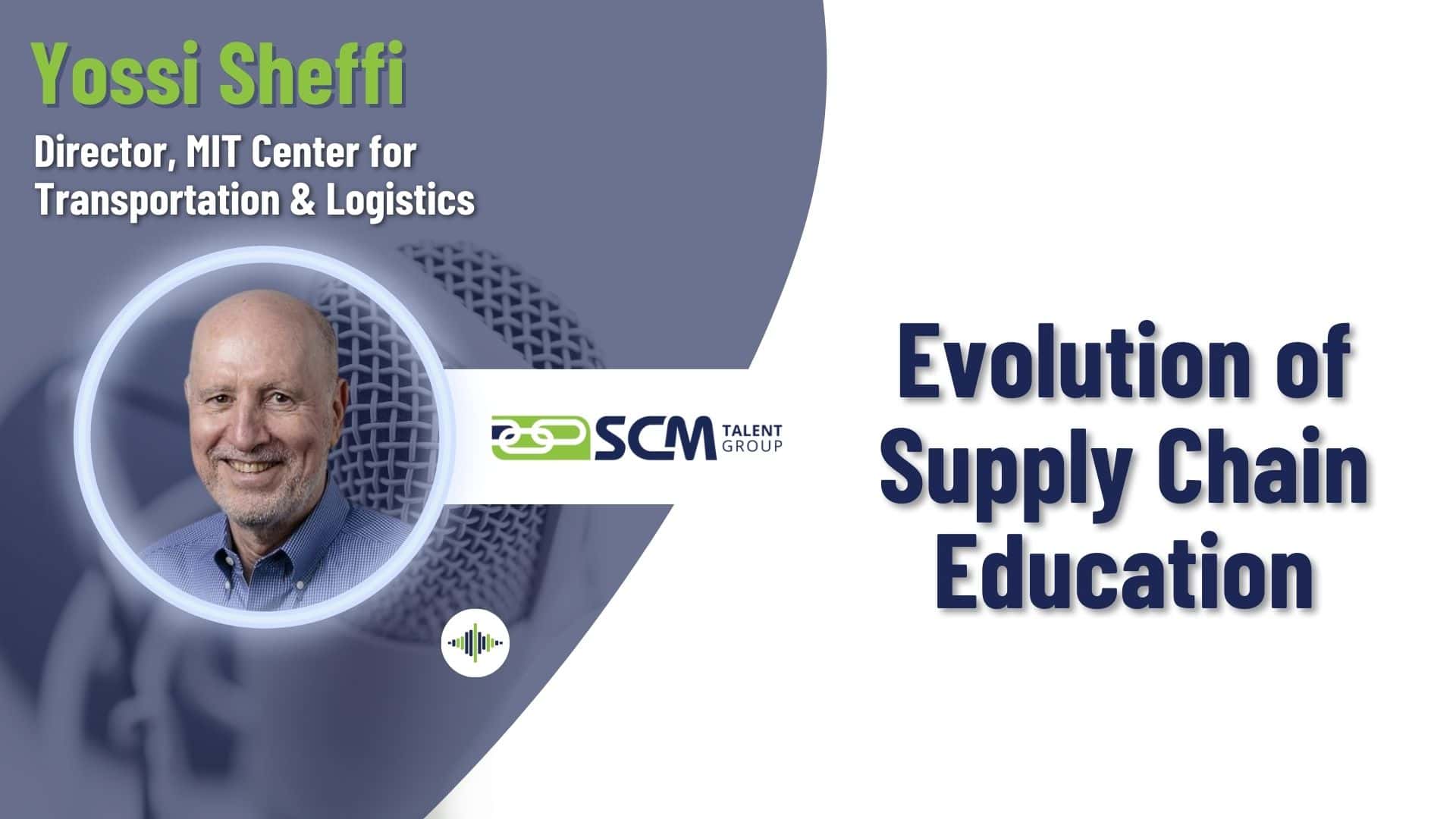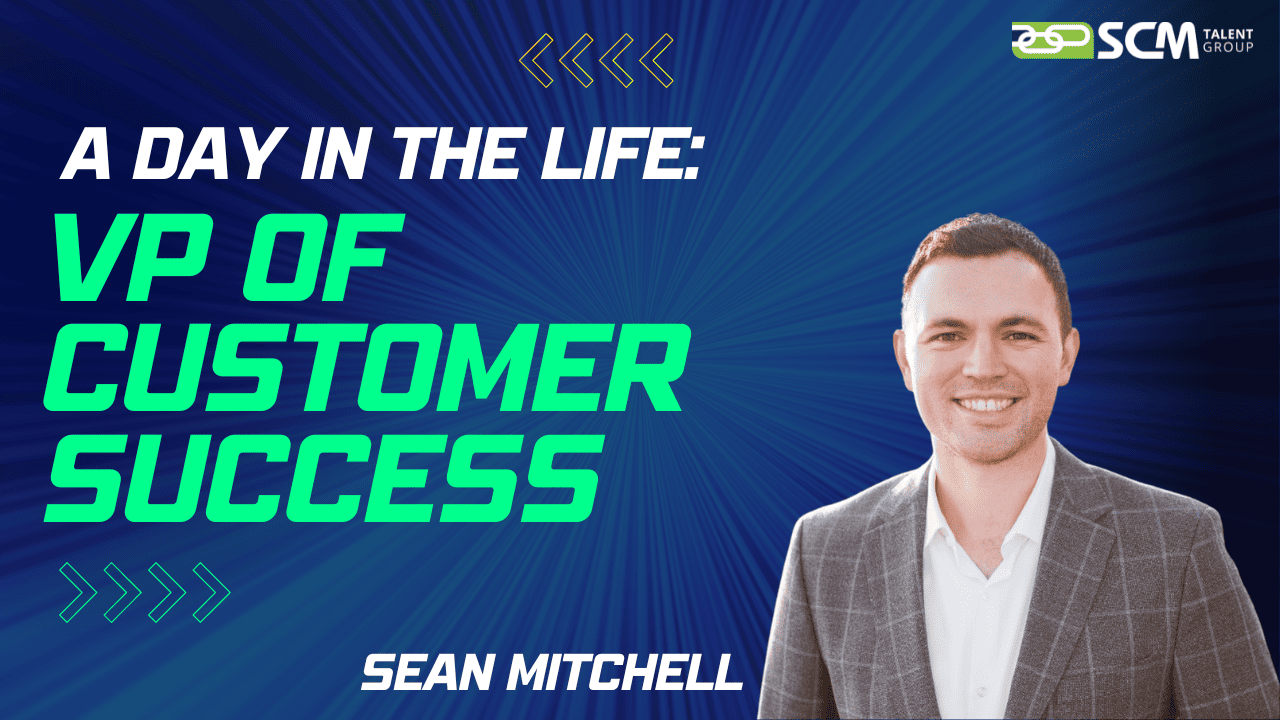
Podcast: A Day In The Life of a VP, Customer Success at an AI Company!
Hosts: Mike Ogle
In This Episode:
In this episode of A Day in the Life of a Supply Chain Professional, we speak with Sean Mitchell, who discusses his role as a VP of Customer Success at Gather AI. Sean also dives into his background, his responsibilities, and his experience working at Gather AI. He also discusses the importance of customer experience and how it has been a core requirement for the company going forward.
We also explore some of the following topics:
- Could you describe the day-to-day responsibilities of your role?
- What aspects of your role do you find the most enjoyable?
- How can one make career progress from your position?
Who is Sean Mitchell?
Sean oversees customer operations for Gather AI as their VP of Customer Success, who’s customers span third-party logistics, retail distribution, manufacturing, food & beverage and health & wellness. He has over 10 years of experience in supply chain and opto-electronic manufacturing, working in engineering, operations and sales. Prior to Gather AI, he was with Fabrinet and Anybots. Sean received a BS in Mechanical Engineering from Cornell University and resides in Redwood City, CA.
I come from the world of Optoelectronics manufacturing, so really, really exciting cutting-edge technology. But at the same point, everything was definitely at the whim of inventory and making sure that everything was there as you need it to be. I had the opportunity to meet, the founders of Gather as they were initially developing the product.
The company that I worked for at the time, Fabrinet, actually sponsored the hackathon that got the inception of the company going. So, it was kind of exciting to see things blossom from there. I was just super excited with the technology and with the capabilities and what this could do for the way in which the world looks at inventory, and beyond that, I was excited to get back into startups, get into robotics, kind of run from there.
[00:02:45] Mike Ogle: So, on that note, what does it take to qualify for a position like the one that you’re in? And I guess a little bit stepping back maybe just before that as well, but in terms of the kind of experience, the skills that you think both hard and soft skills that got you there. [00:03:00] Sean Mitchell: Excellent. I’d love to speak to that. So, for me, my background is in mechanical engineering. I did my mechanical engineering, bachelor’s over at Cornell University. And from there, went and worked a fair amount as a mechanical engineer first, for a startup called Anybots. Was really looking at the hardware. How do we optimize the system there? And then, moved over into the manufacturing world and started moving closer towards operations. So for me, my role today really is a nice blend of both the technical as well as the operational experience, and sales as well, those three different avenues.And really what I look at today is kind of the ability for me to come in and understand exactly what the customer problem is understand exactly where we need to go as far as structuring solutions, and then, working with the team to make sure that everyone understands the pathway to get us there.
For me at least, I look at it is to figure out, how do we solve that problem? And what are the prerequisite skills to get there? And so, I think one is the technical experience. The second one is definitely gonna be how do you work with customers, what does that look like? What is your customer methodology? And really getting the opportunity to spend time working directly with customers. I spent several years as a program manager, just managing optics and assembly. That was my whole world. It was, hey, how do we go through and make sure that we’re manufacturing the right product on time, every time for prototyping, ramp to production, new product, introduction, all of that. And really understanding, how do you drive that customer stickiness.
And then on top of that, mixing in a little bit of sales, right? How do you go through and use the, operational excellence as a selling tool, how do you differentiate yourself? How do you make sure that not only are we gonna start with this early prototype, we’re gonna grow and expand and we’re really gonna look at this, not just as a one-off, but as a partnership.
And so, I think the key thing that I really learned was how do you make sure that you can drive this customer stickiness. And the biggest methodology that I had learned was customers buy from the people they like. They appreciate doing business. The people who are easy to do business with, that also understand them, almost on a personal level.
And so, for me, it really is understanding that customer methodology while also having experience in engineering and operations.
[00:05:11] Mike Ogle: So, what are some of the top objectives of your role and can you provide a little bit of a high-level overview of some of your typical day-to-day tasks? [00:05:20] Sean Mitchell: Absolutely. If I really break down my role, there’s two parts, right? One is, how to drive value for our customers. And the second one is, how are we gonna make that happen? The biggest thing I can say is that we solve problems on a human level, right? If the inventory is not correct, well, how does that impact somebody? It’s important to solve it, but most importantly, it’s important to the inventory control person who’s trying to sort out exactly where the goods are. It’s important to the end customer who’s trying to order the goods and is saying, Hey, look, my manufacturing line or whatever it is, is held up because this part is not found. It’s important to the individual, who’s moving the forklift around, just saying, Hey, I can’t put something away because the inventory is in the wrong spot.Right? So all, all of these problems kind of cascade. So it’s okay, how do we find the easiest way to define, the customer problem and then drive and develop a solution from there? And so, a lot of the day is working alongside with the sales team, and with the customer success teams, and understanding, okay, what does the customer really have to do? And sometimes they’ll spell it out for you and say, we’ve lost million dollars of inventory in this warehouse. We’ve got spoilage, whatever it may be. Others may say, Hey, we know we want some automation. We know that we’re doing well. We’re at 95% accuracy, but we know we could do better. And how do we get there? And it’s going through and using any of the tools that we have to kind of create that path. Secondary to that then is really to work with my team and to make sure, okay, this is the objective that we have. We need to go through and take this customer from 95% accuracy to a hundred percent accuracy.
And we’re gonna see huge improvements, throughout the organization, whatever it may be. Okay. Wonderful. Let’s break down the deployment. Let’s make sure the hardware is there. Let’s make sure that the customers are on board with the requirements. Let’s go through, check the training documentation, go through all of these steps, and really lay out that process and make sure that everybody understands what they’re off to do.
And then also we’re a startup company. We’re, we’re still early days. And so, it’s been fun to watch the evolution of this process. And to start from trying to develop processes that were originally designed for three PhDs to set up the product to how do we make this now plug and play?
How do we make sure that, we’re using the checklist that we’re going through and ensuring that nothing is skipped, and that every customer is getting the highest possible service.
One thing I didn’t mention when explaining about joining Gather. The one requirement that I had for when I was meeting with our CEO was, Hey, customer experience has to be paramount. No matter what. We need to make sure that, if Gather is to survive, it’s because we provide an unparalleled customer experience. We can have amazing technology, but if people don’t like working with us, I promise you, we will have no customers. And so that’s been a core requirement for the company going forward. And I think that’s where a lot of our success has come from is really looking at how do we make sure that we’re putting the customer first,
[00:08:03] Mike Ogle: And that really makes a connection to the next thing we wanted to ask. That’s trying to get an idea of as you work with customers, then that’s certainly one kind of relationship that is paramount. And then as you work externally with other partners and even being a customer to other suppliers, so you think about those external connections and then of course the internal connections. So trying to get some kind of idea that in your position, who do you tend to deal with day-to-day? [00:08:32] Sean Mitchell: Absolutely. I think that’s an excellent question. So, if we look, internally first, I would say, we’re a small company and initially it was myself and the founding team. But as we’ve grown, it’s really about making sure that we’re communicating well internally, that we’re setting the processes and procedures in place. So that is consistent calls with our CEO and as well as our chief operating officer. Just making sure that the company vision continues to be in line, and we’re staying in sync when it comes to that communication level. The next one really is about the sales team. I come from a background of sales as well, so I understand where the value comes when talking to a customer and beyond that, how to have credibility. I joke with the sales team when I jump on the call and talk to the prospective customers, Hey, my job here is to make good on our team’s promises or to throw them under the bus and say it’s not possible, right? It really is to say, Hey, this is what we can do. This is how we’re gonna help you. And really to empower them to say, look, they know exactly what they’re talking about. Yes, we can absolutely do this, and we promise to perform.The next team is really the engineering and product team, looking through and saying, okay, what are the needs that our customers have? What’s the feedback that we’re getting? How is it working in the field? And how do we make sure that we keep this roadmap on track? So that we continue to provide that, unparalleled customer experience while also driving as much value. And what are the trade-offs that we need to get there given we have a finite team.
Finally, not last or least, is the customer success team. This is my direct team, and this is where we’re making sure that, all the deployments are working. We’re making sure that the customers happy, that the product is working well in the wild, and really ensuring that no matter what occurs when it comes to the product, that the customer is still receiving value.
I’m definitely tied between the different arms of the organization just to make sure that either communication is flowing or that I’m able to provide, additional context or credibility.
If we look at the external side, if we look at the customers there’s three different types of interactions that I have externally. One is the customers, second is vendors, and third would be sales reps or external, sales channels. With customers, it’s amazing. I get to talk to everybody from the CEO and the vice president of operations all the way through to finance down to the inventory control team.
Really making sure that you explain exactly what the hardware and the technology does, what the software’s gonna do for them, and then ensuring that we’re set up in a way that’s gonna drive value and fix their problems. One of the key criteria that we have when we go through and we try to sell to a new customer is what’s the problem we’re off to solve?
If you had a magic wand, what would you fix that would make your life infinitely better? And then seeing how can we structure the solution to make sure that lines up. It is nice to have the ability to talk, top to bottom in the organization of our customers and just make sure that they know, hey, we’re ready to jump in and to see where we can support.
When it comes to vendors, I come from a hardware and manufacturing background. I’m very familiar talking to suppliers. And so, when it comes to procurement of drones or hardware or, any sort of external service providers, I find myself knee deep in the negotiation of the contracts.
And then when it comes to sales reps, again, this is really about finding ways to amplify Gather’s sales reach and really to look at, how do we structure these partnerships so that we can make sure we’re doing the most for areas that, we wouldn’t typically service. We have reps in Canada, South America, as well as in Europe and, how do we make sure that we can do more with a limited team.
[00:11:48] Mike Ogle: Excellent. I think one of the things, just because of this being a little bit more of a unique position that the audience would probably want to understand a little bit about how were those early startup days, what was critically important about the way that the small team got together? [00:12:05] Sean Mitchell: So it’s funny, cuz I was at Fabrinet for a little over six years, and again, had an amazing time. High precision opto-electronics is great and you get to see all the new toys and excitement that comes out. You get to see an organization work well. And I think that was hugely beneficial for me is just seeing, how do you structure, a 3 billion company. What are the different pieces? What are the different departments? What are the organizations that you need to make sure that, it can function well. And again, you can kind of drive this seamless customer experience. We’re manufacturing, telecommunications, medical devices all, all over. And it’s funny, I started getting excited to make a move, right? To go to another startup. In contract manufacturing, you have total visibility of all the shiny toys, but no ownership, right? It’s like, Hey, we launched this amazing satellite system.We put, thousands upon thousands of satellites in space. However, the victory is more of a support. It wasn’t our baby to launch. And so, for me, I think the big and exciting thing was to shift over. And I started working with an old family friend, so a professor at Carnegie Mellon who introduced me and said, Hey, you know, they’re a startup, they’re very excited to get it out to market. They could use some help in the sales customer success, operational side. You wanna sit down to meet with ’em. Said, absolutely. I’m not ready to leave my current job, but definitely I want to get in there. I wanna get my hands dirty. I got at least a couple hours in the day between when I finished my day shift of working in the United States and then picking up on calls with Bangkok, throughout the evening I go, Hey, let’s talk. Let me see how I can help.
And so, I remember working with them early on, looking at their sales decks. I visited a couple deployments. I said, Hey, this is really cool. How are you engaging with customers? How are you finding customers? And it was funny because I remember, October of 2019, I was like, Hey, let’s do this. This is gonna be great. And then we start negotiating and walking through, okay, what does the role look like? Where are you gonna come into the organization? And at this point, I’m just kind of donating time. I’m like, Hey, don’t put me on the payroll. Just let me help because I’m excited. This is something I wanna do. Then January of 2020 rolls around and hey, this is wonderful. I think we’re ready and, we wanna bring you on board, February, March, this will be perfect. I’m sure you can guess what happened February, March of 2020. So, I went, maybe I should stick around with my current job for a minute. I’ll continue to help out, but I don’t think you guys can afford one additional hire. And so, for all of 2020, I worked for free for Gather.
I was meeting Gather customers. I was working with the engineering team, I was solving problems. We were trying to find new vendors, new supports. It was really exciting to go through and find out, how are we gonna build this business as lean as possible in an environment where everything is shutting down?
And I remember, we were solving problems down to, well, how are we gonna get the team to the customer site without getting them sick? What if we put them in an RV and drive them all the way there, and I got a phone call from the two deployment engineers going, we will kill each other before we ever get halfway to Nebraska. Got it. Understood. That was a bad idea, but, it was really that excitement of everything’s in lockdown. There’s lots to do, but at the same time there’s a ton of unknowns. I was fortunate that I could officially come on board at the end of 2020, and move over to Gather.
[BREAK at 15:07] [00:15:44] Mike Ogle: So Sean, with some of the international kind of experience, when you first got into that and had your first few experiences in working with people internationally, can you tell us a little bit about what you learned to be able to make the most out of that? [00:16:00] Sean Mitchell: Absolutely. I come from a little bit different perspective. I actually grew up, in Thailand. I have family over in Bangkok. And so for me, I grew up, part-time in California, part-time over in Asia back and forth. And so, for me, travel was never an issue. Meeting new cultures. Speaking with new people was never a problem. I think the excitement really is in understanding, everybody’s out to solve the same problems. There is no barrier of, Hey, this is a problem that only exists in North America. No, it’s anything that we see in our daily lives is something that, it’s universally applicable around the world. And I wouldn’t say it was eye-opening, it was more just the universal truth that I worked with was, Hey, no matter what, we’re here to solve the same problems.I got to go travel and see exciting new places. I traveled. I used to be back and forth to Bangkok from the Bay Area. I’d run to Israel, I’d go over to Sweden, or I’d go kind of all over the place.
[00:16:47] Mike Ogle: Yeah, that definitely has a nice cool factor to it as far as the position is concerned. [00:16:52] Sean Mitchell: It was, it was fun. Definitely tires you out a bit, but it was definitely nice. [00:16:57] Mike Ogle: So that, that takes us right into the next topic in a way of, that’s one of the aspects that you enjoyed. But, what are some of the other aspects in your position that you have enjoyed the most? [00:17:09] Sean Mitchell: I think there’s really three things that I’m excited about. Especially in this role, I am far happier at Gather than I’ve ever been in any other job. And so really the first one is building something new. I think I touched on this earlier, but it’s nice to have ownership in the growth, right? It’s nice to see, something that was just like four or five people sitting around a card table and now you know, it is really affecting the lives of dozens of companies across the US right? And growing a team from six to 35, right?And so, I think the building something new, really a lot of the unknown and excitement, but also the ability to take from my past, right? Understand, how does a functional company work? And then apply that directly to Gather. How do we sell a product that no one’s ever seen before? How do we apply that? How do we make this as robust and reliable? That really for me was fun.
The other one, is seeing the impact to the customers, I’ve had a customer who, adopted our drones and then, six months later they said, Hey, are we gonna stick around with this? They were piloting it and they said, are we moving forward or are we gonna let Gather go? And they said, no, these things are worth, they’re weight and gold. They’re amazing. They can’t imagine going back to walking through warehousing, scanning everything manually. Using individuals to check known good product, doing 40 to 60 locations per hour versus, 300 to 900 locations per hour. So really seeing that impact and seeing how we’re changing the lives of a lot of our customers.
The last one then is really seeing how I can directly affect the growth of my team. I think that’s probably the thing that I’m most excited about is going through and seeing how do we promote exciting capabilities within a lot of the individuals. And so, one of the things, especially in our deployment engineer position that we look at, is how do you take this opportunity in a startup, where you have the ability to wear many hats. And use that to learn different facets of the business. And when I say that, I want these individuals, many of them who are coming straight outta college to go through and say, Hey, I’m gonna spend some time working with sales and talking to customers and saying, what does the sales look like? I’m gonna sit and spend some time in quality assurance and make sure, hey, I understand really what’s going on there. Work with the autonomy team, work with the product team, work with marketing, and really get a taste of the different areas of the business. And then from there, Get to go through and make a decision about their career growth and say, you know, this has all been amazing.
I really think I should be in hardware engineering, or, I like this. I hated that. You know what, I want to be a program manager. I want to go through and really work with customers and figure out how do we grow and expand that operational side. So for me, I think it really is about promoting growth has been, of the three, the most exciting part.
[00:19:35] Mike Ogle: And the flip side of that question is certainly the kinds of challenges that you face. The things that may provide some difficulty to deal with or everything in a position is not always the fun side. So when you end up having those kinds of challenges, could you talk about a few of those that you faced and how you go about it? [00:19:55] Sean Mitchell: Definitely. So I think there’s two real challenges that I see. One, are your typical, technical challenges or customer problems that are there to solve. And those are your everyday challenges. The second is, how do you motivate a small team to take on really big opportunities. So going into the first one, I think technical challenges are something where as long as you can create that framework, as long as you can create that level of trust and communication within the team, and again, trust and communication with the customer, you can solve these problems.The thing that I’ve always appreciated as a team and something cultural that we created was that, anytime, let’s say, a customer accidentally crashed a drone, something like that, everybody drops what they’re doing and they jump on to solve the problem. What’s going on? What happened? What caused this issue? And really it is about creating that culture of accountability, but also, making sure that everybody cares and communicates, internally and with the customer. To me, that’s the easy one.
The second one, really looking at, how do we motivate a team to take on a huge challenge? We used to have a team of six to eight people, and how are we gonna bring this product to market? How are we possibly gonna take this amazing technology that the original three co-founders, created, and take this and make sure that we can drive value to our customers.
How are we gonna take on a 60,000 pallet location facility? This is gonna take weeks of implementation. We’re gonna have to create new documentation, we’re gonna have to create new training materials, everything from there. It’s really about making sure that we appreciate spending time in the forest without getting lost in the trees.
It is about going through and saying, look, let’s break down this problem. Let’s make sure that we know this is in many times a world’s first. And celebrating the progress as opposed to just being overwhelmed by the size of the challenge.
[00:21:36] Mike Ogle: We’ve heard that from a number of guests, over time. Certainly not a majority, but, just being able to celebrate the successes now and then can mean a tremendous amount to the team and their development. [00:21:49] Sean Mitchell: I appreciate that. Thank you. [00:21:51] Mike Ogle: For those in the audience who are thinking about trying to get to where you are today, what’s your advice for anyone seeking to explore a job like yours? [00:22:01] Sean Mitchell: So, I think the first one is try to get as much experience as possible. The biggest thing I can say is if you can come in to a company, knowing the basics of, Hey, this is what engineering looks like. This is what sales looks like, project management, finance, quality, HR, all of these different pieces of the organization. If you can go through and find the opportunity to sit in a meeting, say, oh, okay, so this is what a P&L statement is. Wonderful. That makes total sense. Oh, this is what a sales pitch looks like. That’s really cool. Oh, what does a marketing qualified lead like? All of these pieces, if you can go through and try to get as much experience in the areas that you’re interested in, as well as the areas that you’re not. Really go through and at least learn and have some appreciation for the different pieces of the organization. That helps you so that when you find yourself in a position where you can start creating process and instituting change, you know what the pieces are that you’re working with, you know where, what you can do and what you need to ask for help.There the common adage of you don’t know what you don’t know. Take the opportunity to soak up as much knowledge as possible. And I think that’s your best opportunity to end up in a place where you can apply your skills to many different pieces of the business.
[00:23:09] Mike Ogle: And so, I’m gonna ask this, trying to get an understanding of the common career paths. It may be difficult to get to where you sit today, but trying to understand how someone, not only gets to that point, but then, where do you go from here? And, if there’s a personal, where do you go from here to provide that as well? [00:23:31] Sean Mitchell: Certainly. So, I think for me the biggest one is if you want to be, in the, new field of customer success, which really is just, kind of customer operations, there’s a few paths in here, but the most important one is having a customer methodology, right? How do you see good customer experience looking? And so, a lot of times when I’m interviewing people, especially for my department, one of the biggest things I ask is, can you tell me about a time where, you had great customer service?What did that mean? What did that look like? And again, some people, kind of sit there and think about it and they go, oh, well, you know, never really mattered to me. And this is not the role for you. This is not the place that you should be spending your time. The people who excel in this field are people who wanna solve human problems, right?
And I don’t mean to say, Hey, this is the customer service department, this is the department that makes sure we’re driving value for customers. That when you pick up the phone and you talk to somebody from our team, they’re excited to speak with you. That they go, Hey, look, I know things are bad, but we’re gonna work this out together. And that you have that credibility. For me, definitely my recommendation is having experience in operations and in sales, have been, invaluable. And then I think, just given that it’s a startup, experience in engineering was super helpful as well. And really being able to structure and break down customer problems, but also in understanding, what are we gonna do from a solution level, and from a development.
If I were to go back and try to instruct, Hey, how do you end up running the, customer operations part, I would definitely say spend the time working with customers, learn what they need. But on top of that, also spend the time learning about operations in the organization. What does a highly functional company look like? And then from there, what tools can you use to come back and bring that to, a less mature company that could then, utilize them and grow.
[00:25:10] Mike Ogle: So Sean, you wear a number of different hats. So as you go from conversation to conversation to conversation with very different kind of people during the day, are there any kind of pointers that you could provide of how to really manage wearing those different hats in different conversations each day? [00:25:28] Sean Mitchell: It’s an excellent question. And it’s funny cuz I definitely sometimes will go, am I talking to my team? Am I talking to a customer? Am I talking to a vendor? And it’s funny, cuz the tone changes all of a sudden, talking to a customer go, yeah, of course we can do this. No problem. We’ll get it done. Whereas with a team, it’s, okay, we’re all about accountability. Let’s work together, let’s get this done with a vendor, Hey, where are you? And so, you’ve gotta take the moment to frame it up and understand exactly what you’re getting yourself into.The biggest thing is taking the time to plan out my day and think about, okay, what are the meetings I’m gonna need to be in? What are the notes? What do I need to prepare for these calls? What do I need to understand and go in? Some of the learnings that I had from my bosses early on, one was, any meeting that you come away with without action items, was no meeting worth having, right?
You gotta go through and say, okay, what are the next steps? What did we learn as well as coming in and saying, okay, what is the objective? So, when you start the meeting, the objective might be, Hey, we’re trying to sell the product. It could be we’re just trying not to get fired, or we need a status on what’s happening next on a certain component part, or whatever it may be. Coming into each meeting knowing exactly what you’re off to do and what does success look like helps to frame that thinking.
I think the other one, that was super helpful for me, less so when you think about internal communications, but especially when you’re talking about some of the more difficult days with customers is that you are totally in control. You should be totally in control of your own reactions to what the world is throwing at you. My old boss used to say, if you react, they win. So someone can be explosive, aggressive, whatever it may be, as long as you’re able to stay calm, collected, and understand exactly what’s going on, and say, look, I have the tools that I need to succeed here, it’s gonna be fine. You’re gonna be fine. And I think, it’s all about keeping cool head and then you can decompress after the meeting, but if you let people drag you down, you’re gonna struggle. Especially on those tougher days. This is how you deal with the tougher interactions. And as long as you stay calm, you’re winning. You’re in control.
[00:27:23] Mike Ogle: So Sean, thank you for sharing your experiences in a day in the life. [00:27:28] Sean Mitchell: Thank you very much. I really appreciate the time and getting to share what life in, the vice President of customer success at Gather AI looks like. I’m excited with my role. I’m excited with the growth of Gather, and I’m really happy to be a part of it.Check Out Other Podcast Episodes:
Podcast: A Day in the Life of a Planning Manager – with Frank Boxley
Brian Kennedy2023-11-02T20:21:23+00:00November 2, 2023|
Listen to our 9th episode of the "Day-In-The-Life of a Supply Chain Professional" podcast series! Hear the day-to-day activities of Frank Boxley, a Planning Manager at Merson!
Podcast: Climbing the Supply Chain Leadership Ladder – with President of McLane Grocery, Chris Smith
Brian Kennedy2023-10-31T18:05:57+00:00October 31, 2023|
[...]
Fostering Positive Culture and Employee Engagement – with Global HR Executive, Ashley Berg Jensen
Brian Kennedy2023-10-26T15:50:01+00:00October 26, 2023|
Tune into the 4th episode of our Supply Chain Talent Building and Engagement Podcast Series. Dive deep into fostering a positive culture and boosting employee engagement with Global HR Executive, Ashley Jensen.
Podcast: A Day in the Life of a CEO – Career Path to Chief Executive Officer
Brian Kennedy2023-10-24T16:47:17+00:00October 24, 2023|
Listen to our 6th episode of the Day-In-The-Life of a Supply Chain Professional podcast series! Hear the day-to-day activities of Sean Mitchell, VP of Customer Success at Gather AI!
Podcast: A Supply Chain & Transportation Trailblazer – with Supply Chain Executive, Michelle Livingstone
Brian Kennedy2023-10-20T14:15:47+00:00October 20, 2023|
Listen to our 61st Supply Chain Careers Series Episode featuring Supply Chain Executive, Michelle Livingstone!
Podcast: The Evolution of Supply Chain Education – with Yossi Sheffi, Director, MIT Center for Transportation & Logistics
Brian Kennedy2023-10-17T16:34:15+00:00October 17, 2023|
Listen to our 59th Supply Chain Careers Series Episode featuring Director, MIT Center for Transportation & Logistics, Yossi Sheffi!
